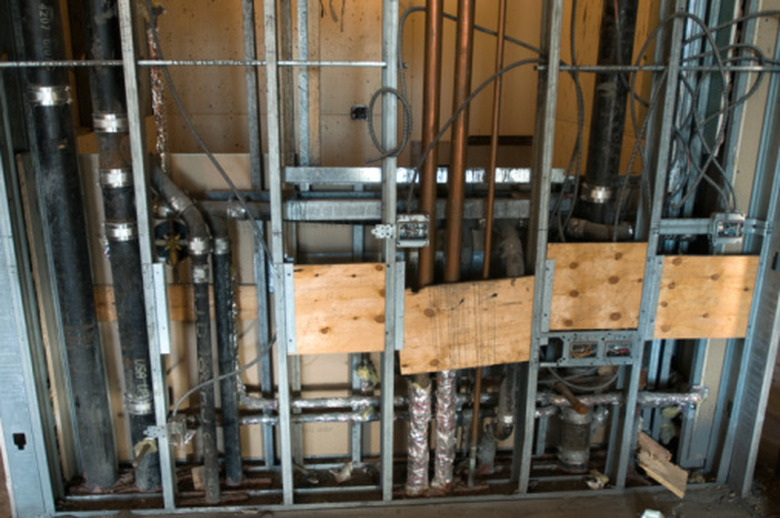Differences Between THHN & THWN Wire
Thermoplastic high-heat resistant nylon-coated wire, or THHN, is a common wire used for connecting branch circuits and appliances. Its counterpart is called THWN (or THWN-2). This thermoplastic heat- and water-resistant nylon-coated wire is designed to operate in the same environments as THHN without the addition of installation accessories for use in harsher environments. THWN is considered an evolution of THHN, although both are still widely used.
THWN
Water resistance is a major reason for the use of THWN wire. These cables are installed in environments where a conduit is not mandatory; this additional flexibility makes it the preferred cable among electrical contractors, given that both wire types need not be carried. Stand-alone THWN cables are coated in PVC, as opposed to vinyl, to assist in water resistance.
THHN
THHN wire is the original version of the dual-rated cable. Designed to withstand heat up to 194 degrees Fahrenheit, this resistance drops to 167 degrees if oil exposure occurs. THHN wire is typically two-conductor, and found in the familiar ROMEX®-style cabling that laces all homes and other structures. For underground and conduit-free installations, the UFB variant should be chosen.
MWR
Machine wire rated (MWR) wire often has the dual THHN/THWN rating stamped on its nylon or PVC jacket. This wire is often found in smaller gauges, and sometimes with tinned ends for ease in soldering. The uninsulated version is not THHN/THWN rated, and is used in the creation of windings for power supplies and motors.
Other Terms and Commonalities
THHN/THWN wire is often dual rated; the differences between the two are minor in most applications. As a result, most manufacturers have decided to make these into one type of product. Both offer the same gauge range, are offered in solid and stranded versions and are rated for 600 volts.
